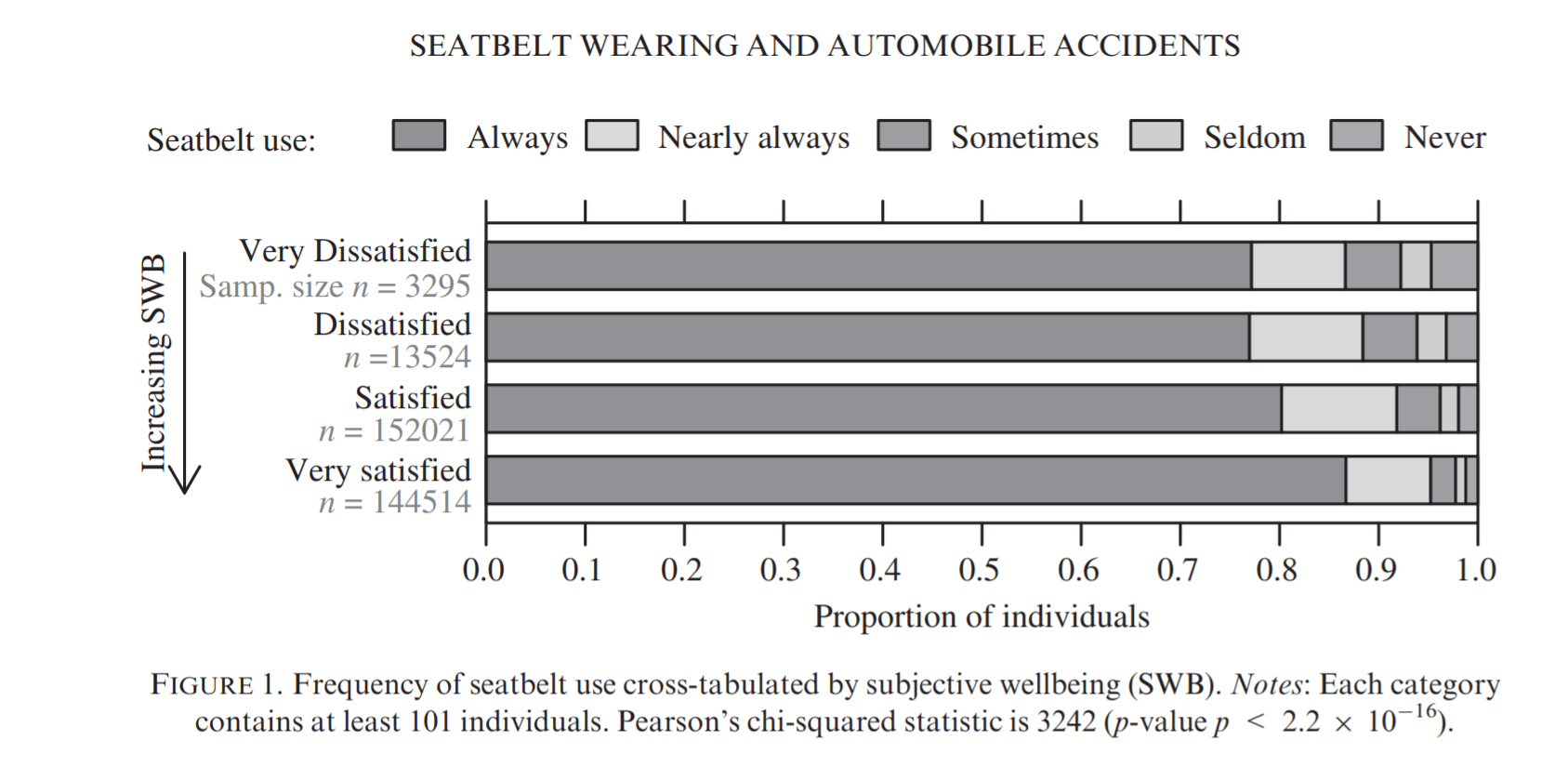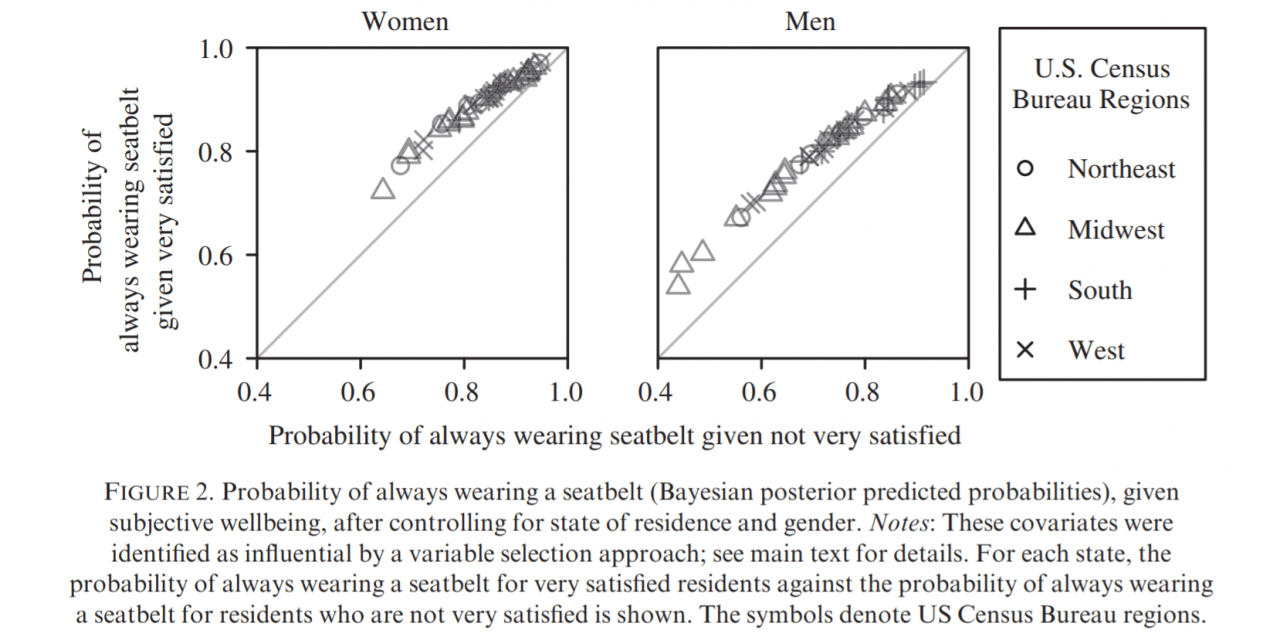Happy people wear seat belts: risk taking and wellbeing
We believe that the purpose of government and community action is to improve wellbeing. We know this has knock-on effects too that may be more your aim. A snappily titled paper ‘the objective benefits of subjective wellbeing’ tells us that happier people:
- have better health
- do better at work
- have better personal and social outcomes.
So if you’re more interested in other outcomes such as, say, reducing deaths in road traffic accidents, wellbeing findings have something to offer and sometimes they’re not so obvious.
One intriguing finding is that people who have poor food safety behaviours aren’t particularly unhappy or less worried about getting sick. Instead, they are often less likely to feel that the things they do in life are worthwhile; they just don’t care.
Happier people are more likely to take care of themselves
In real life, this means they do things like wearing their seatbelts. Amazingly, we can see this in the data and those who are less happy with their lives are less likely to wear their seatbelts.

There are clear gender differences in this data and this is consistent with other findings on risk-taking including crashing when driving, fighting and smoking. Although the gender difference seem to be reducing over time.

Studies have also looked at the impact of age, gender and socio-economic differences on risk-taking:
- An increased risk of a crash as a driver can, in part, be explained by the age and gender differential in risk-taking behaviour.
- We confirm that wellbeing and some health-risk behaviours – fighting and smoking – are linked. While socio-economic factors affect health-risk behaviours and also adolecents’ reported worries, they have little impact on other aspects of youth wellbeing.
Pleasure, purpose and boredom
Young people do seem to get more of their wellbeing from pleasurable rather than purposeful feeling activities and this can help us understand and develop meaning at different life stages. Similarly, a shift to purpose rather than pleasure in the 40s mirrors the mid-life crisis life satisfaction dip that is reflected in the peaks in anti-depressant use, alcohol related A&E admissions and suicides.

One explanation from psychology is that sensation-seeking is a way to alleviate felt boredom. This is one of the pathways to impulsive behaviour as measured by Whilteside and Lynam’s UPPS impulsivity measure.
From a policy perspective, this emerging research seems to suggest turning the orthodox approach to reducing risky behaviour in populations on its head. Or at least, re-framing it. If many governments’ current tactics could be summarised as: ‘stop this behaviour and you’ll be happier’; future attempts might look at improving people’s intrinsic happiness with their lives. This would mean a systematic shift to addressing root causes of our behaviours, as well as their risk-taking symptoms.
